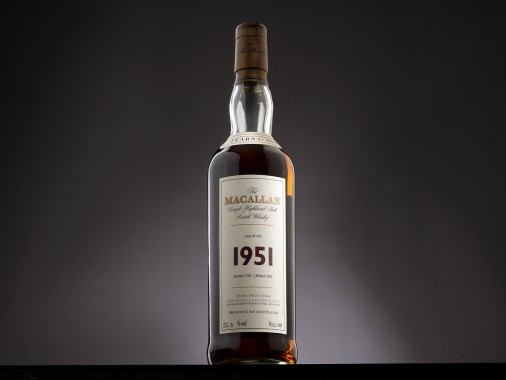 Beneath The Label: Royal Brackla 1924 60 Year Old
Beneath The Label: Royal Brackla 1924 60 Year Old Founded in 1817, Brackla distillery was the first in Scotland to be granted a Royal Warrant, becoming Royal Brackla at the behest of King William IV in 1835. Today its single malt is widely distributed by owners, Bacardi, having been packaged alongside Aberfeldy, Aultmore and The Deveron in The Last Great Malts collection in 2014. It has not always been so easy to find, however.
Until 1998, the distillery was part of the Diageo portfolio which had seen it contribute once to the Rare Malts Selection and a 10-year old briefly grouped with their other Flora & Fauna single malts. The company’s attentions had only really been drawn to single malts when DCL was reorganised as United Distillers, who launched the Classic Malts collection in 1988. Prior to this, DCL was Scotland’s blended Scotch empire, the scale of which is evident from the consideration that Royal Brackla may likely still be a Diageo asset had they not been forced by financial regulators to sell the Dewar’s brand and its associated distilleries due to an anti-monopoly ruling.
In the DCL days, the distilleries were licensed to the many blending companies that it operated as its subsidiaries. These companies, which included John Walker & Sons, John Dewar & Sons and White Horse, operated with a degree of autonomy, particularly as it pertained to single malts. Any single malt brands of DCL distilleries were therefore managed and distributed exclusively by the blender who was its licensee at the time, and interest in this varied from company to company.
DCL obtained Royal Brackla through its acquisition of John Bisset & Co, and it was back to this company that the distillery was then licensed. Royal Brackla malt has always been synonymous with blended Scotch and even counts the inventor of the category, Andrew Usher, as a former director. Bisset’s did little to alter this perception, bottling only two limited release single malts in the latter 1980s at the request of Zenith Italia, the import company of the legendary G.P. Bonfanti. DCL had already shut the distillery down by this point, however.
Not having branding prepared for a respective single malt means many of today’s most sought-after bottles often exist as fascinating mosaic histories of their ownership at the time. For example, 1970s Highland Distillers bottlings of Tamdhu and Highland Park can often be found in bottles that later became the hallmark of the Bunnahabhain brand, and at William Grant & Sons the earliest Balvenie single malts borrowed the trademark triangular green glass of its sister distillery, Glenfiddich. Back at DCL, perhaps of most renown is the only distillery bottling of Port Ellen produced during its lifetime, filled by licensee Low, Robertson & Co to mark the occasion of the visit by the Queen to the distillery in 1982. With no precedent for the appearance of an official Port Ellen single malt, they turned to John Hopkins who shipped over some of their iconic diamond shaped decanter bottles from Oban. Just as intriguing however is the 1924 vintage Royal Brackla.
An incredible age-statement, when the casks were discovered hidden in the distillery warehouses, the decision was made to produce a commemorative bottling for the 60th birthday of Emperor Hirohito of Japan in 1984. By this point, John Bisset was doing the last of its distilling at Royal Brackla and their blending and bottling operations had generally been wound up, so the bottling of this exceptional parcel of casks was entrusted to another DCL company, James Buchanan & Co. They filled sixty bottles of it to be sent to Japan, each housed in square crystal decanters, etched with the Scottie and Westie dog logo of the company’s famous Black & White blend. Miniatures were also produced before the remaining whisky was bottled and set aside for a later occasion. Again, the company used Black & White branded bottles, this time the standard green glass with short white cap of the period.
As it transpired, that occasion was the re-opening of the distillery by United Distillers in 1991. The 62 bottles were labelled and gifted to visiting dignitaries, along with a clutch of miniatures for the staff. The Flora & Fauna release would then be introduced two years later, becoming the first true distillery bottling of Royal Brackla single malt.
“Bottled history” is an often-overused phrase in discussions about whisky, however there are occasions where it is more than apt. The Queen’s Visit Port Ellen and the 1924 Royal Brackla are not just fascinating whiskies, but their presentations are just as important, each giving a unique insight into the landscape and internal workings of the whisky companies of the day. These are rarities that truly merit such grandiose linguistic flourishes. Here we have history in the bottle, and the bottle itself is history too.







